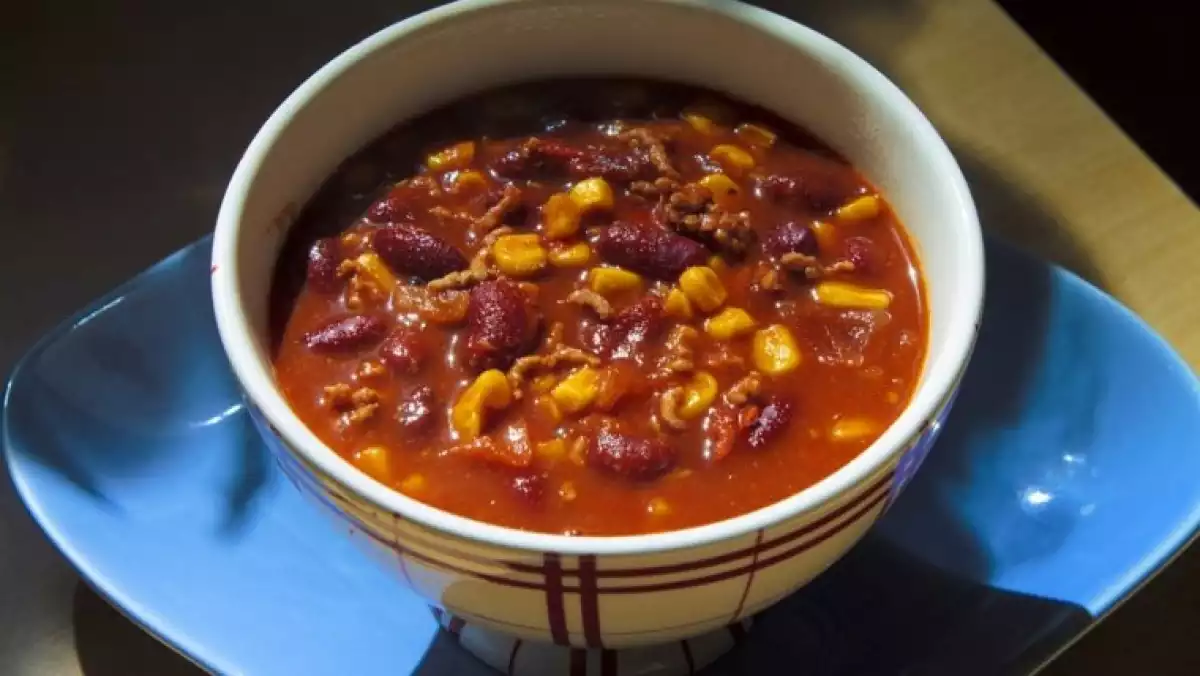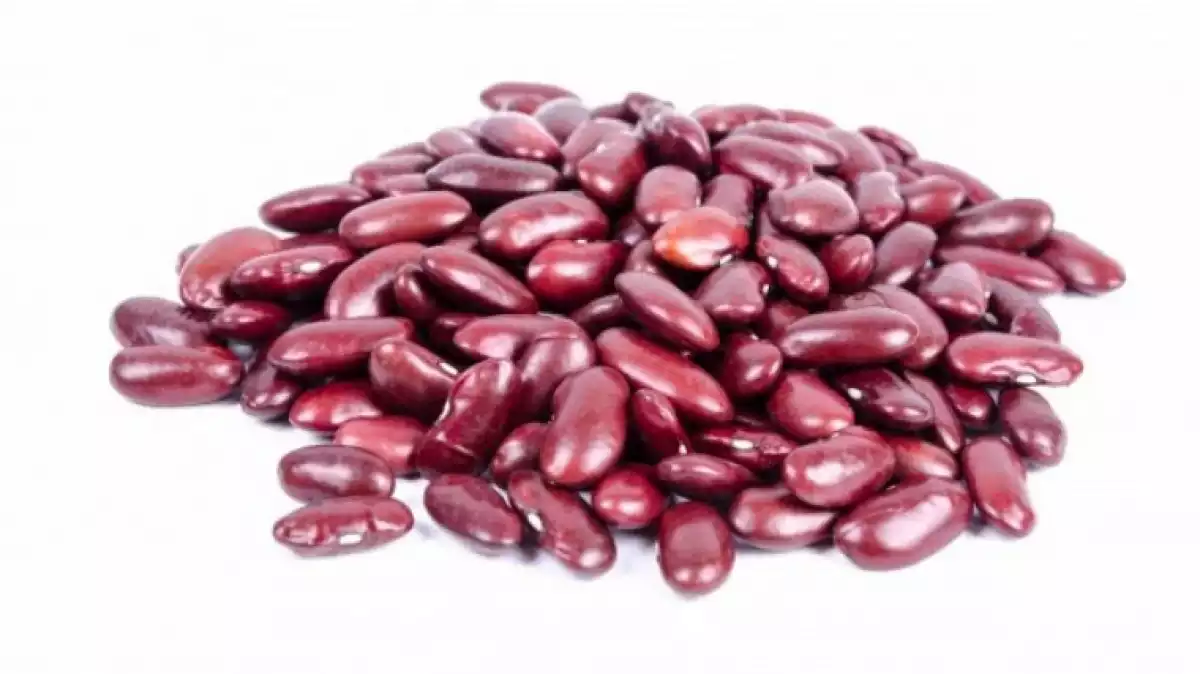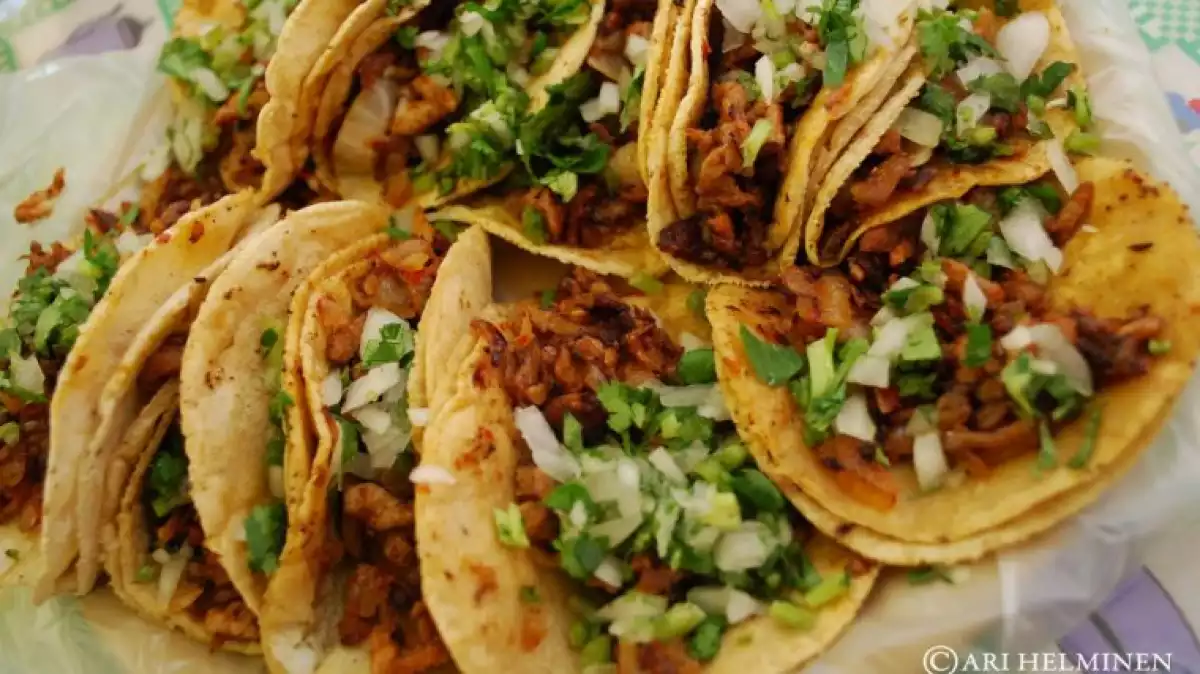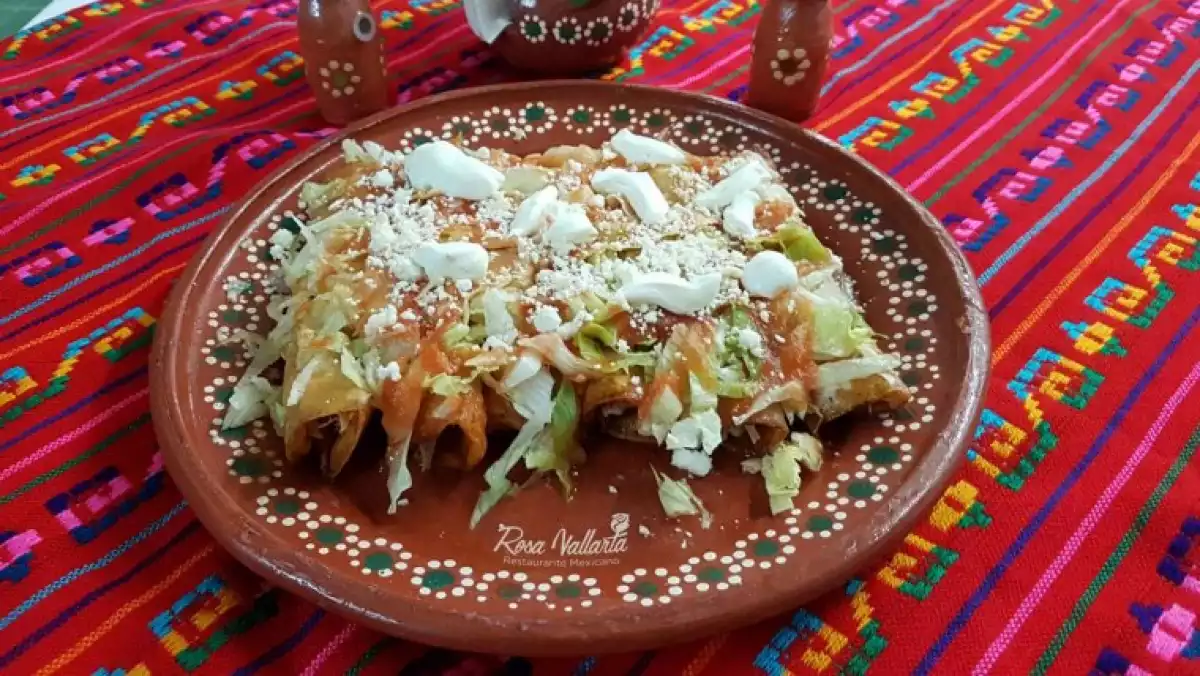
Chili con carne, also known as chili with meat or simply "chili", is a recipe with meat originally from the Mexico-United States border. Therefore, it is known as a typical Tex-Mex dish (mistakenly attributed to the Mexican cuisine).
The article below will explain how to make chili con carne according to both the original and the vegetarian recipe. Finally, it will describe other dishes with meat and chili, such as nachos, tacos and enchiladas.
Chili con carne recipe
The original chili con carne is a kind of thick soup with spicy taste. According to the International Chili Society, the key ingredients for this dish are meat (usually pork or beef), beans and chili (red or, sometimes, jalapeño), which is what gives it that spicy flavor.
Although its origins are not known for sure, it is said that chili con carne originated in northern Mexico, particularly in southern California (on the border with San Diego, USA), and at a time when there were many people to feed, but few foods available.
Due to the amount of low-cost ingredients that are used, as well as its high amount of calories, protein and carbohydrates, this dish was perfect for feeding many people, even with few resources.
Later on, this dish spread to the eastern border of the United States (Texas), becoming a very popular dish in that region. However, it should not be confused with another typical Mexican dish, which is totally different: carne con chile.
Ingredients
Although there are many variations, the simple chili recipe includes the following ingredients (up to 6 serves):
1 ½ kg of minced beef (beef and/or pork)
800 g of red kidney beans
2 red chilies, sliced (or 3 tablespoons of chili powder)
2 tablespoons of olive oil
2 onions, chopped in small cubes
2 cloves of garlic, chopped in small cubes
3 tablespoons of tomato purée (peeled tomato)
400 g can of tomatoes, chopped in small cubes
1 tablespoon of cumin
1 tablespoon of cilantro (powdered or chopped leaves)
Oregano powder
Cinnamon (optional)
Salt and pepper
Worcestershire sauce
200 ml of red wine (optional)
Preparation
Making chili con carne takes 20 to 30 minutes, although it has a cooking time of one hour and a half to two hours. If you follow this recipe, each serving provides 420 kcal, as well as 45 g of protein and 23 g of carbohydrates.
First, wash all the vegetables and chop the onion, the garlic and the peppers in small pieces to add to the stir-fry. Also, chop the chives and cut the white part of the stem from the green leaves. Take the tomatoes out of the can and crush them with a fork until they form a paste.
You will need a large saucepan to pour the olive oil. Then, put the minced meat and fry until browned. At this point, add the red wine and let it boil for three minutes.
After this time, add the tomatoes, the tomato purée, the chili and the seasonings (the cumin, salt, pepper, cilantro, oregano, cinnamon and the Worcestershire sauce). Mix until all the ingredients are simmered.
Put a lid on the pan and let it cook for 40-50 minutes, stirring occasionally. After this time, add the beans and, ideally, some fresh cilantro. Leave the heat to low and simmer for 10 minutes, without the lid on the pan.
Now you can taste the mix and decide if it needs more seasoning. Finally, turn off the heat and serve.
Chili con carne is usually served with white rice, guacamole and sour cream (whipped cream). Sometimes, it can also be eaten with nachos, although it is usually served only with rice and guacamole. In other words, it can be served as it is, with corn tortillas, or added to tacos with chili.

A vegetarian alternative: Chili without meat
As it is the case with almost any dish, the chili con carne recipe can be adapted to the vegan diet. Meatless chili originated in the ‘60s and ‘70s along with the increasing popularity of vegetarianism and veganism.
It can be eaten by vegans and vegetarians because it does not include any ingredient of animal origin. Some call it "chili with vegetable meat" while others call it simply "chili without meat".
For this recipe, follow the same steps and use the same ingredients, except for minced beef. The latter can be replaced by seitan or tofu. Also, you can use corn, potatoes or mushrooms instead of meat.
Faster alternatives
If you do not have time to prepare it, there is ready-made chili that comes in cans. You simply need to open it and warm it in the frying pan for a few minutes. In the same way, you can pour it into a bowl and heat it in the microwave oven.
Like homemade chili, it can be served with nachos with meat and other sauces available in supermarkets. The cheddar cheese sauce is one of the most popular.
Other dishes with meat and chili
Apart from chili con carne, there are many other popular dishes, in both Mexico and the United States, made with meat and chili. Among the most consumed ones, there are nachos with meat, tacos and enchiladas. Let’s see what each one of them is.
1. Nachos with meat
Nachos with meat are actually an adapted recipe for chili con carne. The recipe follows the same steps that were already described (although jalapeño peppers are usually added). What really changes is the way it is served.
Instead of serving the mixture of meat, chili, beans and tomatoes in a bowl with rice or guacamole, place a handful of nachos on a plate.
Then, add a spoonful of guacamole on the nachos that are in the center, along with a spoonful of sour cream or whipped cream. On the rest of the nachos, put some mozzarella or Gouda cheese, preferably grated or cut into chunks.
Next, put the chili con care over the nachos. It Is important that the mixture remains hot so that the cheese melts on the nachos.
In this case, as the nachos are the main ingredient, you do not need to prepare so much chili con care. Besides, you can mix the minced beef with sausage.
You can also make nachos with cheese and homemade pineapple sauce like in the following video:
2. Tacos
Tacos are another typical Mexican recipe that have become popular in the United States. The ways to prepare them are almost infinite: they can be prepared with any type of meat (animal or vegetable) and also with vegetables.
Like nachos, they have a base made from corn tortilla, traditionally a soft tortilla, although in some places of northern Mexico and the United States, baked tortillas of crisp consistency are used.
Depending on your taste, add some chili con carne on the tortillas. You can also add a spoonful of sauce, some chilies or seasonings such as cilantro and onion.
Among the most popular tacos, there are the shepherd style tacos, the basket tacos and the seafood tacos, according to the region.

3. Enchiladas
Enchiladas are another of the typical Mexican dishes with chili. In this case, the main ingredients are tortillas and a spicy tomato sauce (but not so much the type of meat).
Enchiladas are usually made with shredded chicken meat but, in some cases, they are prepared without meat. The sauce is made with tomatoes (red or green), chilies, onion, garlic and cilantro. All these ingredients are ground and previously roasted for a few minutes in a frying pan or griddle.
After grinding them, put them back in the frying pan, add a teaspoon of oil, and leave them cook until the sauce boils. At the same time, the tortillas are heated and placed on a plate.
Put some chicken on top and roll the tortilla like cannelloni. Once you have three or four rolls of tortilla with chicken on the same plate, pour some freshly made tomato sauce over them.
Finally, add sour cream or whipped cream, some grated fresh cheese, strips of onion and slices of avocado.

Check out the original article: Chili con carne: receta original y otros platos con carne y chile at viviendolasalud.com
References:
Harter, T. (2018). Flight Risk Chili[online]. Available at http://www.chilicookoff.com/winning-recipes[Retrieved January 30, 2019].
Pratt, J. (2019). Chili con carne. Food recipes BBC. Retrieved January 31, 2019. Available at https://www.bbc.com/food/recipes/chilliconcarne_67875
Prandoni, A. y Zago, F. (2012). Los sabores de la comida Tex-Mex. De Vecchi Ediciones: Barcelona.
Walsh, R. (2004). The Tex-Mex Cookbook: A History in Recipes and Photos. New York: Broadway Books.
